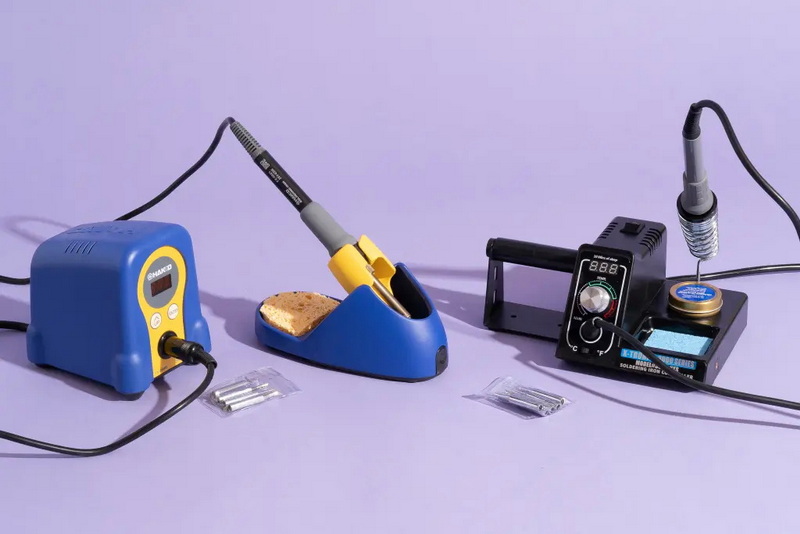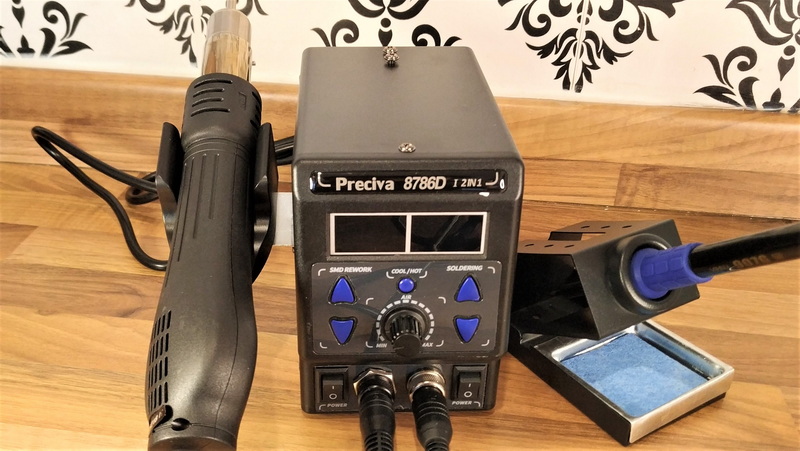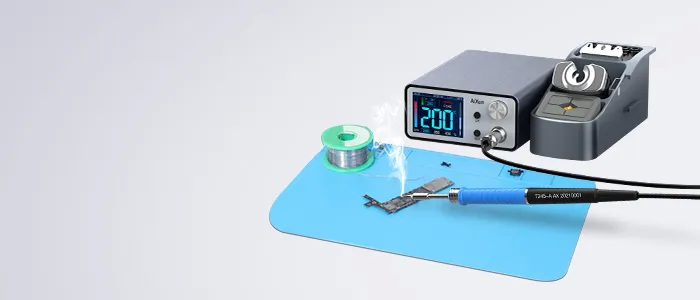Content Menu
● Understanding SMD Soldering Machines
● Advantages of High-End SMD Soldering Machines
>> Enhanced Precision and Accuracy
>> Increased Production Speed and Efficiency
>> Reduced Waste and Material Savings
>> Longevity and Reliability
>> Flexibility and Future-Proofing
● Cost Considerations: Understanding SMD Soldering Machine Price
>> Initial Investment vs. Long-Term Value
>> Factors Influencing Price
>> Cost Breakdown in Manufacturing
● When Is It Worth Investing in a High-End SMD Soldering Machine?
>> High-Volume Production Needs
>> Complex or High-Precision Products
>> Long-Term Business Growth and Scalability
>> Quality and Brand Reputation
● Potential Drawbacks and Considerations
>> High Initial Cost
>> Training and Maintenance Requirements
>> Risk of Overcapacity
● Conclusion
● FAQ
>> 1. What factors affect the smd soldering machine price?
>> 2. How does a high-end SMD soldering machine improve production efficiency?
>> 3. Are high-end SMD soldering machines suitable for small manufacturers?
>> 4. What maintenance is required for high-end SMD soldering machines?
>> 5. Can investing in a high-end SMD soldering machine reduce overall manufacturing costs?
In the fast-evolving electronics manufacturing industry, Surface Mount Device (SMD) soldering machines play a pivotal role in assembling printed circuit boards (PCBs) with precision and efficiency. For manufacturers and businesses considering upgrading or purchasing new equipment, a critical question arises: Is it worth investing in a high-end SMD soldering machine? This article explores the advantages, cost considerations, and long-term benefits of high-end SMD soldering machines, with a particular focus on the impact of the smd soldering machine price on return on investment.

Understanding SMD Soldering Machines
SMD soldering machines are automated devices designed to solder surface mount components onto PCBs. Unlike traditional through-hole technology, SMD technology allows components to be placed directly on the surface of the board, enabling smaller, more compact designs and higher production speeds. High-end SMD soldering machines incorporate advanced features such as precision placement, high-speed operation, and automated quality control, making them essential for modern electronics manufacturing.
The evolution of SMD soldering machines has been driven by the increasing complexity of electronic devices. As consumer electronics, medical devices, automotive electronics, and industrial controls demand smaller and more sophisticated PCBs, the role of advanced soldering machines becomes even more critical. High-end machines are often integrated with other production line equipment, such as automated optical inspection (AOI) systems and pick-and-place machines, forming a seamless manufacturing ecosystem that ensures quality and efficiency.
Advantages of High-End SMD Soldering Machines
Enhanced Precision and Accuracy
High-end SMD soldering machines are engineered to place components with exceptional accuracy, reducing the risk of misalignment, solder bridges, or defects. This precision ensures higher product reliability and fewer reworks, which translates into cost savings and improved customer satisfaction. The ability to handle smaller and more complex components is a hallmark of premium machines, enabling manufacturers to produce cutting-edge electronics with tight tolerances.
The precision is achieved through advanced vision systems, real-time feedback loops, and finely tuned mechanical components. These machines can detect component orientation and position, adjust placement dynamically, and apply the exact amount of solder paste needed. This level of control is difficult to achieve with lower-end machines or manual soldering, which often results in inconsistent quality.
Increased Production Speed and Efficiency
Advanced SMD soldering machines operate at significantly higher speeds compared to lower-end or manual alternatives. This increased throughput allows manufacturers to meet high-volume production demands without compromising quality. Faster assembly speeds reduce lead times and improve overall operational efficiency, which is critical in competitive markets where time-to-market is a key factor.
High-end machines often feature multi-head configurations and parallel processing capabilities, allowing simultaneous soldering of multiple components. This not only boosts output but also optimizes the use of factory floor space and labor. The automation reduces human error and fatigue, further enhancing productivity.
Reduced Waste and Material Savings
The precision of high-end machines minimizes solder paste waste and component misplacement, leading to less scrap and fewer defective boards. Smaller component footprints enabled by SMD technology also reduce PCB size and material consumption, contributing to cost savings and environmental sustainability.
By applying solder paste only where needed and in precise quantities, these machines reduce excess material usage. This careful control lowers the cost of consumables and reduces the environmental impact of manufacturing processes. Additionally, fewer defects mean less rework and waste, which is both economically and ecologically beneficial.
Longevity and Reliability
Investing in premium SMD soldering machines often means acquiring equipment built to higher standards with better durability and serviceability. Such machines typically have longer lifespans, supported by reliable aftersales service and availability of spare parts. This longevity improves the return on investment by spreading the cost over many years of productive use.
High-end machines are designed to operate continuously in demanding production environments with minimal downtime. Their robust construction and advanced diagnostics help prevent unexpected failures and allow for predictive maintenance. This reliability is crucial for manufacturers who cannot afford interruptions in their production lines.
Flexibility and Future-Proofing
High-end machines usually offer greater flexibility to handle a wide range of component types and sizes, as well as the ability to adapt to evolving manufacturing requirements. This adaptability ensures that the equipment remains relevant as product designs change or new technologies emerge, protecting the investment against obsolescence.
For example, some machines can switch between different soldering methods, such as reflow, wave, or selective soldering, depending on the product requirements. Others can be upgraded with new software or hardware modules to accommodate new component packages or improve performance. This flexibility is a key advantage in industries where product life cycles are short and innovation is constant.

Cost Considerations: Understanding SMD Soldering Machine Price
Initial Investment vs. Long-Term Value
The smd soldering machine price for high-end models is undeniably higher than that of entry-level or mid-range equipment. This upfront cost can be a significant barrier for small businesses or startups. However, the higher initial investment is often justified by the long-term benefits such as reduced labor costs, lower defect rates, and increased production capacity.
When evaluating the cost, it is important to consider the total cost of ownership (TCO), which includes not only the purchase price but also operating expenses, maintenance, training, and potential downtime. High-end machines tend to have a lower TCO due to their efficiency and reliability, making them more economical over the machine's lifespan.
Factors Influencing Price
Several factors contribute to the price of an SMD soldering machine:
- Technology and Features: Machines with advanced automation, precision controls, and integrated inspection systems command higher prices.
- Production Capacity: Higher throughput machines designed for mass production are generally more expensive.
- Brand and Support: Established manufacturers with strong aftersales support and spare parts availability tend to price their machines at a premium.
- Customization and Flexibility: Machines tailored for specific applications or capable of handling diverse components may have higher costs.
- Software and Integration: Machines that come with sophisticated software for process control, data logging, and integration with manufacturing execution systems (MES) often carry a higher price tag.
Cost Breakdown in Manufacturing
In addition to the machine price, manufacturers must consider other costs such as maintenance, consumables, and operator training. However, automated high-end machines reduce labor dependency and rework expenses, which can offset ongoing costs.
Training is a critical but sometimes overlooked factor. Skilled operators and technicians are necessary to maximize the machine's capabilities and maintain quality. Investing in comprehensive training programs ensures that the workforce can effectively manage the equipment, reducing errors and downtime.
When Is It Worth Investing in a High-End SMD Soldering Machine?
High-Volume Production Needs
For companies with large-scale manufacturing operations, the efficiency gains and reliability of high-end machines can lead to substantial cost savings and faster turnaround times. The ability to produce millions of components per day with minimal downtime makes the investment worthwhile.
High-volume producers benefit from economies of scale, where the initial smd soldering machine price is spread over a large output, significantly reducing the per-unit cost. This advantage is particularly important in competitive sectors like consumer electronics, automotive, and telecommunications.
Complex or High-Precision Products
Products requiring tight tolerances, fine-pitch components, or double-sided assembly benefit significantly from the precision and flexibility of premium SMD soldering machines. In such cases, the cost of defects or recalls can far exceed the machine price.
Medical devices, aerospace electronics, and high-end computing equipment often demand the highest quality standards. Investing in a high-end machine ensures compliance with stringent regulations and reduces the risk of costly failures.
Long-Term Business Growth and Scalability
Businesses planning for growth and diversification should consider high-end machines to future-proof their production lines. These machines can accommodate evolving product designs and higher volumes without frequent equipment upgrades.
A high-end SMD soldering machine can be a strategic asset, enabling manufacturers to quickly adapt to new market opportunities and customer demands. This agility supports sustainable business growth and competitive advantage.
Quality and Brand Reputation
For manufacturers prioritizing quality and reliability, investing in top-tier equipment enhances product consistency, reduces warranty claims, and strengthens brand reputation.
In markets where brand trust is essential, delivering defect-free products on time is non-negotiable. High-end machines help maintain these standards, fostering customer loyalty and opening doors to premium market segments.
Potential Drawbacks and Considerations
High Initial Cost
The upfront smd soldering machine price can be prohibitive for smaller operations or those with limited capital. Careful financial planning and cost-benefit analysis are essential.
Leasing options or phased investments might be viable alternatives for businesses unable to afford the full purchase price upfront. Additionally, exploring government grants or subsidies for advanced manufacturing equipment can help offset costs.
Training and Maintenance Requirements
Sophisticated machines require skilled operators and regular maintenance to perform optimally. Investing in training and support services is necessary to maximize machine potential.
Neglecting these aspects can lead to underperformance, increased downtime, and premature equipment failure, negating the benefits of the initial investment.
Risk of Overcapacity
Purchasing a machine with capabilities far exceeding current production needs can lead to underutilization and delayed return on investment.
It is important to align machine selection with realistic production forecasts and business plans. Consulting with equipment suppliers and industry experts can help identify the right machine size and features.
Conclusion
Investing in a high-end SMD soldering machine is a strategic decision that depends on production volume, product complexity, quality requirements, and long-term business goals. While the smd soldering machine price for premium equipment is higher, the benefits of enhanced precision, increased speed, reduced waste, and improved reliability often justify the investment. For manufacturers aiming to scale operations, improve product quality, and remain competitive in a fast-paced market, high-end SMD soldering machines offer a compelling value proposition. However, smaller businesses or those with limited budgets should carefully assess their needs and consider whether a mid-range machine might better suit their current stage.
By thoroughly evaluating production requirements, financial capacity, and future growth plans, manufacturers can make informed decisions that balance cost with performance and sustainability.

FAQ
1. What factors affect the smd soldering machine price?
The price is influenced by the machine's technology level, production capacity, brand reputation, and included features such as automation and inspection systems. Customization and aftersales support also impact cost.
2. How does a high-end SMD soldering machine improve production efficiency?
High-end machines operate at faster speeds with greater accuracy, reducing defects and rework. Their automation capabilities minimize manual labor and increase throughput, leading to more efficient production lines.
3. Are high-end SMD soldering machines suitable for small manufacturers?
While beneficial, the high initial cost may not be justifiable for small-scale operations. Smaller manufacturers might opt for mid-range machines or manual processes until scaling up production.
4. What maintenance is required for high-end SMD soldering machines?
Regular maintenance includes cleaning, calibration, software updates, and replacing worn parts. Proper training for operators and technicians is essential to maintain performance and longevity.
5. Can investing in a high-end SMD soldering machine reduce overall manufacturing costs?
Yes, despite the higher upfront smd soldering machine price, the reduction in labor costs, material waste, defects, and downtime can lower total manufacturing expenses over time.




















